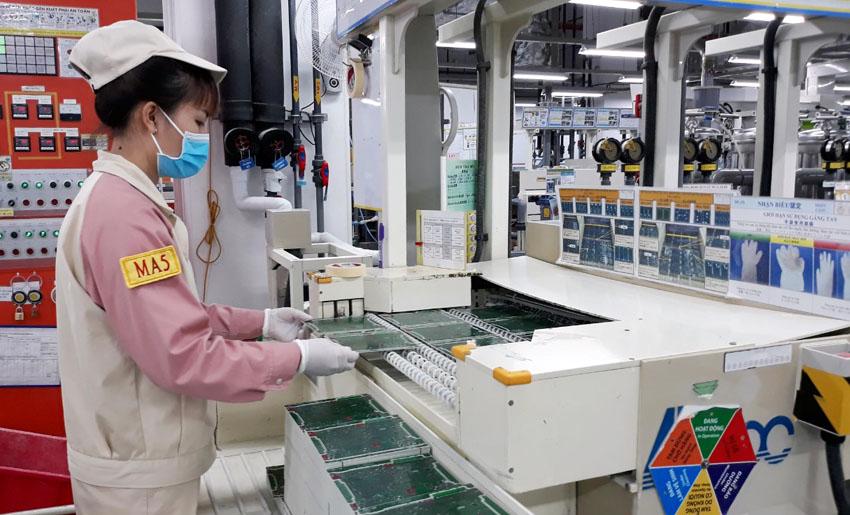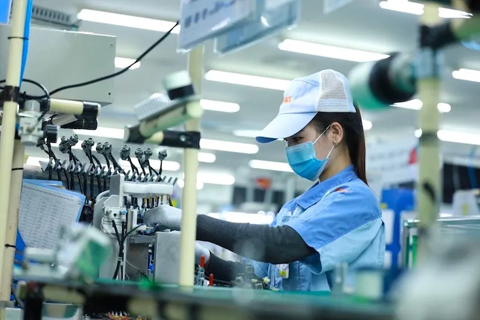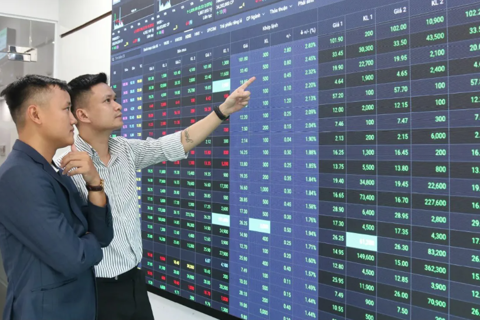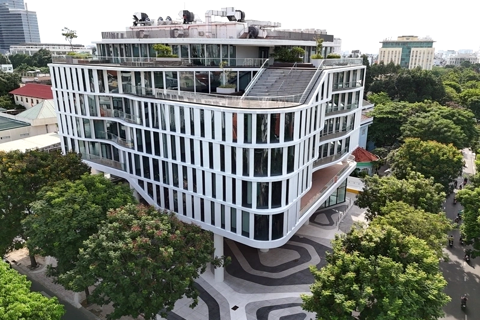FDI inflows to Vietnam remain resilient despite global uncertainty: World Bank
The disbursement of approved FDI projects increased by 8.7% year-on-year in March, the fourth month of increase as post-Covid-19 lockdown constraints ease.
The number of new FDI projects increased by 28.7 % year-on-year in March 2022, which is seen as a promising development, highlighting the continued attractiveness of Vietnam to FDI, according to the World Bank in its monthly report.
| Electronics production at Meiko Vietnam in Thach That Industrial Park, Hanoi. Photo: Le Nam |
Overall, FDI commitment reached US$3.9 billion in March, 35.2% higher than in the previous month. Two-thirds of the total commitment was greenfield investment made by new firms, including a US$1.3 billion project in toy manufacturing.
The M&A activities continued to recover from the contraction in 2020 and 2021, with its value quadrupling in March compared to a year ago, a six-month growing streak.
By sector, manufacturing continued to be the attractive destination for foreign investors, while investment in real estate showed strong signs of recovery after being severely affected in the wake of the pandemic.
Investments in real estate reached $1.2 billion in March and $2.7 billion in the first quarter of 2022, already surpassing the total commitment to this sector in 2021. The disbursement of approved FDI projects increased by 8.7% year-on-year in March, the fourth month of increase as post-Covid-19 lockdown constraints ease.
The World Bank’s report also suggested the Omicron infections surge that gripped the country for most of February and early March appeared to peak in mid-March.
The falling number of new confirmed cases could be attributed partly to less officially recorded tests as people increasingly used rapid test kits at home. As of April 9, all-time confirmed cases reached 10.2 million and the death toll rose to 42,794. About 79% of the population had been fully vaccinated against Covid-19, and over 46% had received boosters.
GDP grew by 5% year-on-year in the first quarter of 2022, comparable to the growth rate in the last fourth quarter.
Industry and construction and services sectors grew 6.4% and 4.6% year-on-year, respectively, contributing 4.3 percentage points to quarterly GDP growth.
Growth of industry and construction was driven by strong external demand for manufactured products, while services sector performance varied across sub-sector, stated the report.
Meanwhile, finance, banking and insurance, and information and telecommunications have been exceptionally resilient over the past two years and maintained solid growth, it continued.
In addition, the industrial production index grew by 8.5% year-on-year in March, comparable to pre-pandemic rates, thanks to recovering domestic demand and robust external demand.
The most dynamic subsectors include machinery, electronics, apparel, footwear, and beverage, which posted double-digit growth rates.
The manufacturing PMI dropped from a ten-month high of 54.3 in February to 51.7 in March. The fall may be more because of the labor shortage in the wake of infections related to Omicron than to inflationary pressures and increased uncertainty related to the war in Ukraine.
“Nonetheless, the PMI remained above the 50 benchmarks, indicating positive business conditions,” stated the World Bank.
Inflation ticks up
The Consumer Price Index (CPI) increased by 2.4% year-on-year in March, compared to 1.4 %in February. This is the highest inflation rate in seven months but remains well below the 4.0 percent target.
Gasoline and diesel prices increased by 13.4% month-on-month and 56.1%. year-on-year due to surging global oil prices associated with the war in Ukraine. They continued to be the principal contributor to inflation by raising transport prices. Food prices also ticked up after a muted 2021.
Core CPI inflation, which excludes food, energy, and items whose prices are administered by the government rose to 1.1% year-on-year from 0.7% year-on-year in February, reflecting the recovering domestic demand and the transmission of higher transportation costs as well as higher prices of imported consumer and intermediate goods.
Rising consumer and producer prices warrant close monitoring of domestic price developments as rising inflation would affect the recovery of domestic consumption and economic growth, stated the bank.
While CPI increases have been subdued in 2021 due partly to slack in aggregate demand, accumulated increases in intermediate and producer price index in the last three quarters could impact production decisions and translate into higher consumer prices, especially food prices.
In the short run, targeted policy intervention to alleviate the impact of the price hikes on the general population, and especially on the most vulnerable is recommended, it added.
The temporary petroleum tax reduction recently introduced by the authorities is one such short-term measure.
In the medium term, other measures would include a more targeted, effective, and responsive social protection system that would help build resilience to shocks in the economy.
“If price increases persist, the economy should be allowed to adjust to the price changes. Also, the authorities should consider structural reforms to help the economy become more productive and increase aggregate supply. These would include tax breaks for productive and innovative investments, reducing barriers to doing business and logistics costs, and investing in the education and technical training of the workforce,” noted the report.












